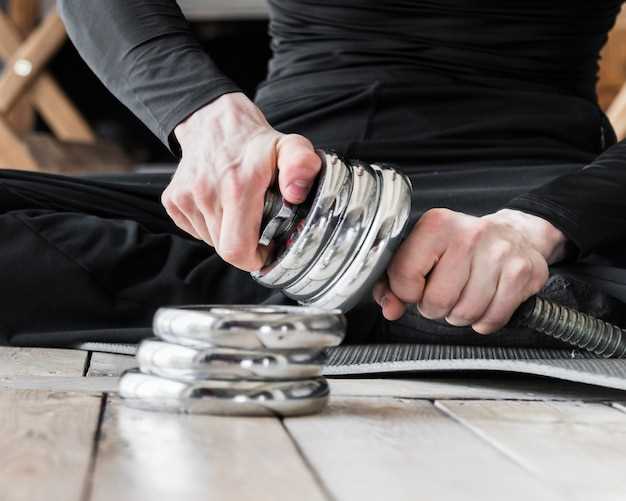How to Choose the Best Performance Brake Pads


When it comes to enhancing the safety and performance of your vehicle, selecting the right brake pads is essential. Performance brake pads not only improve stopping power but also contribute to better handling, reduced brake fade, and increased longevity under demanding conditions. However, with the plethora of options available on the market, choosing the right brake pads can be a daunting task.
This guide aims to simplify the selection process by outlining the critical factors to consider when choosing performance brake pads. Understanding the differences between various materials, performance ratings, and intended uses will empower you to make an informed decision that aligns with your driving style and vehicle requirements.
Whether you are a casual driver looking to enhance everyday performance or an enthusiastic racer seeking the ultimate braking experience, knowing how to identify key features in brake pads is vital. From the composition of the pads to their heat resistance capabilities, let’s delve into the essential aspects that will aid you in selecting the best performance brake pads for your needs.
Understanding Different Types of Brake Pads

When selecting brake pads, it is crucial to understand the various types available, as each type offers distinct characteristics and performance benefits. The three main categories of brake pads are organic, metallic, and ceramic, each tailored for specific driving conditions and preferences.
| Type | Material Composition | Advantages | Disadvantages |
|---|---|---|---|
| Organic | Made from composite materials, including rubber, glass, and resins. | Low noise, excellent initial bite, lightweight, and less expensive. | Wear out faster, less effective under high temperatures, can result in brake fade. |
| Metallic | Composed of metal shavings, such as copper, iron, and steel, combined with bonding agents. | Superior heat dissipation, longer lifespan, and better performance under extreme conditions. | Increased noise levels, can be abrasive to rotors, and may produce more dust. |
| Ceramic | Made from a combination of ceramic fibers, non-ferrous materials, and bonding agents. | Quiet operation, minimal dust production, excellent stopping power, and longevity. | Higher cost, less effective at very high temperatures compared to metallic pads, might not suit track use. |
In addition to these main types, there are also performance variants designed for specific applications, such as racing or off-road usage. These pads may optimize certain features, such as grip or heat resistance, to meet the demands of their intended environment.
Choosing the right brake pad involves considering driving habits, vehicle type, and performance expectations. Factors like noise tolerance, dust generation, and braking performance under varying conditions should also be taken into account to select the most suitable option for your needs.
Factors Influencing Brake Pad Performance
The performance of brake pads is crucial for ensuring safe and effective braking in vehicles. Several key factors significantly influence their performance, including material composition, design, heat dissipation, dust and noise characteristics, and compatibility with braking systems.
Material Composition: Brake pads are primarily made from various materials, such as organic, semi-metallic, and ceramic compounds. Each type exhibits different characteristics. Organic pads provide a quieter operation, while semi-metallic pads offer better heat dissipation and durability. Ceramic pads, known for their low dust production and longevity, perform consistently across diverse temperatures. The choice of material directly affects braking efficiency and wear rates.
Design: The design of brake pads, including their shape and thickness, impacts contact with the braking surface and overall performance. The design affects how force is distributed during braking, which can enhance or hinder stopping power. Ventilated designs can aid in cooling, thereby maintaining optimal performance during extended use.
Heat Dissipation: Braking generates significant heat, which can lead to brake fade if not effectively managed. Brake pads with better heat dissipation properties are less susceptible to performance degradation under heavy use. Factors such as pad ventilation and the ability to transfer heat away from the braking surface are critical in maintaining consistent performance during demanding conditions.
Dust and Noise Characteristics: Dust production and noise output are important considerations. Some brake pads generate excessive brake dust, which can lead to increased maintenance and aesthetic concerns for the wheels. Likewise, noise levels during operation vary by pad type; quieter options can enhance the driving experience while providing sufficient stopping power.
Compatibility with Braking Systems: The compatibility of brake pads with a vehicle’s braking system is vital. Different vehicles may require specific pad formulations and designs to function optimally with their braking dynamics. Ensuring proper compatibility can prevent installation issues and enhance overall performance.
In summary, understanding these factors–material composition, design, heat dissipation, dust and noise characteristics, and compatibility–enables drivers to select the best performance brake pads tailored to their specific needs and driving conditions.
How to Identify the Right Material for Your Vehicle
Choosing the right brake pad material is essential for optimal braking performance and vehicle safety. The most common brake pad materials include organic, metallic, and ceramic options, each offering distinct characteristics suitable for different driving needs.
Organic brake pads, made from materials like rubber, resin, and fibers, provide quiet operation and less wear on rotors. They are best suited for everyday driving in light vehicles, offering good performance under normal conditions, but may fade under high heat or heavy braking scenarios.
Metallic brake pads, composed of a mix of metal fibers, provide excellent braking performance and heat dissipation. These pads are ideal for performance vehicles and heavy-duty applications, as they excel under high-stress situations. However, they may generate more noise and cause increased wear on rotors.
Ceramic brake pads, made from a dense ceramic material mixed with nonferrous fillers, offer a balanced solution. They provide effective stopping power, reduced dust, and quieter operation, making them a popular choice for modern vehicles. Ceramics perform well across various temperatures but may not handle extreme conditions as well as metallic pads.
When selecting the right material, consider your driving habits, vehicle type, and typical conditions. If you engage in spirited driving or track events, metallic pads may be preferred. For daily commuters, organic or ceramic pads may suffice. Additionally, consult your vehicle’s manual or a professional mechanic to ensure compatibility with your braking system.
Ultimately, understanding the differences among brake pad materials and evaluating your specific needs will help you choose the right option for your vehicle, enhancing both performance and safety on the road.
Assessing Durability and Longevity of Brake Pads
When selecting performance brake pads, durability and longevity are critical factors that directly impact safety and maintenance costs. The best brake pads are constructed from high-quality materials that withstand the rigors of elevated temperatures and harsh driving conditions. Understanding the composition and characteristics of different pad materials can guide you in making an informed choice.
Organic brake pads, while often quieter and producing less dust, typically wear out faster than their semi-metallic or ceramic counterparts. Semi-metallic pads offer a balance between performance and durability, featuring metal fibers that enhance their heat dissipation properties. However, they may produce more noise and dust. Ceramic brake pads, on the other hand, provide excellent longevity and consistent performance, making them a popular choice for both daily drivers and performance vehicles.
The thickness of the brake pad also plays a significant role in its lifespan. Thicker pads generally last longer before needing replacement. Additionally, consider the manufacturer’s recommendations for replacement intervals and inspect the pads regularly for wear indicators. Factors such as driving style, vehicle type, and environmental conditions also affect pad longevity. Frequent stop-and-go driving, towing, or aggressive braking will lead to quicker wear.
Finally, it is essential to select brake pads that match both your vehicle’s specifications and your driving habits. Investing in high-quality, performance-oriented brake pads may result in higher upfront costs but can save money in the long run by reducing the frequency of replacements and associated labor costs. Always prioritize pads with strong customer reviews and manufacturer warranties to ensure you are choosing products designed for durability and longevity.
Evaluating Noise and Dust Levels of Brake Pads
When selecting brake pads, evaluating noise and dust levels is crucial for overall driving experience and vehicle maintenance. Brake pads can significantly vary in their noise production and dust generation, impacting both comfort and cleanliness of your vehicle.
Here are key considerations when assessing noise and dust levels of brake pads:
- Noise Levels:
- Material Composition: Different materials, such as ceramic, semi-metallic, and organic, produce varying noise levels. Ceramic pads typically generate less noise compared to semi-metallic pads.
- Design Features: Some brake pads come with noise-dampening shims or specific designs that minimize vibration, reducing noise during braking.
- Installation Quality: Proper installation is essential. Misalignment or inadequate fitting can lead to increased noise. Ensure pads are installed by a qualified technician.
- Dust Levels:
- Material Type: Ceramic pads generally produce less dust than their semi-metallic counterparts, making them a popular choice for drivers concerned about cleanliness.
- Dust Composition: The formulation of the brake pad can influence dust characteristics. Some formulations create fine dust that can adhere to wheels, while others create larger particles that are easily cleaned.
- Performance vs. Cleanliness: High-performance pads may prioritize braking power and fade resistance but could generate more dust. Balance your needs between performance and cleanliness.
To evaluate the noise and dust levels of brake pads effectively, consider the following steps:
- Research Reviews: Look for reputable reviews that specifically mention noise and dust levels related to specific brake pad models.
- Consult Professionals: Speak with automotive experts or mechanics about their experiences with different brands and types of brake pads.
- Test Drive: If possible, test drive vehicles equipped with different brake pads to compare their performance in terms of noise and dust under real driving conditions.
By carefully evaluating the noise and dust levels of brake pads, you can make an informed decision that balances performance, comfort, and the cleanliness of your vehicle.
Comparing Costs vs. Benefits of Premium Brake Pads
When selecting brake pads, one must consider the crucial balance between cost and performance. Premium brake pads often come with a higher price tag compared to standard options, prompting potential buyers to evaluate whether this investment is worthwhile. Understanding the specific benefits provided by premium options can clarify this decision.
One significant advantage of premium brake pads is their superior materials. Typically made from advanced compounds, these pads offer enhanced durability and better heat dissipation. This resilience leads to extended lifespan, reducing the frequency of replacements and ultimately saving money over time. In contrast, conventional pads may wear faster, necessitating more frequent changes and maintenance costs.
Performance is another critical factor. Premium brake pads often provide shorter stopping distances, reliable performance in various weather conditions, and reduced brake fade. This can significantly enhance vehicle safety, particularly in high-performance or heavy-load scenarios. Those who prioritize driving safety and vehicle handling should weigh these benefits heavily against the initial costs.
Noise and dust generation are additional considerations. Premium brake pads are generally engineered to produce less noise and minimal dust compared to their standard counterparts. This leads to a cleaner brake system and a more comfortable driving experience, which can be particularly beneficial for everyday drivers and professionals alike.
Furthermore, investing in premium brake pads can sometimes lead to lower overall vehicle maintenance costs. Since these pads are designed to perform better in conjunction with other braking components, they can reduce wear on rotors and calipers, thus lowering the chances of costly repairs down the line.
Ultimately, while premium brake pads require a higher upfront investment, their long-term benefits in terms of performance, safety, and reduced maintenance costs make them a compelling choice for many drivers. Carefully assessing driving habits and needs will help determine if the benefits outweigh the initial costs for you.
